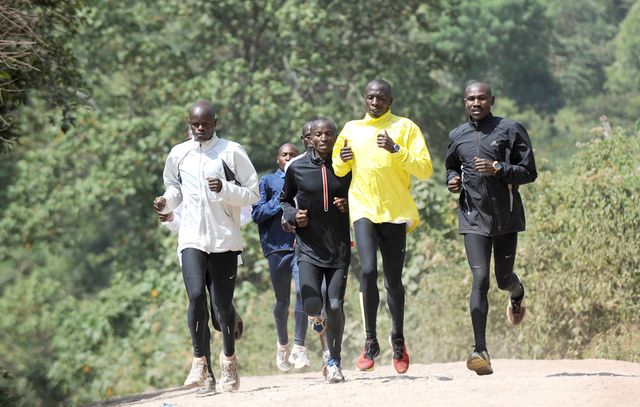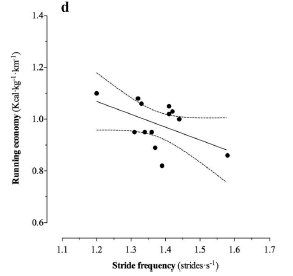For at least two decades, researchers have been trying to figure out what makes East African runners so fast. Though the results haven’t produced any definitive conclusions, the opportunity to study very fast runners always yields some interesting insights.
One of the latest additions to this literature, published earlier this year, is a biomechanical analysis of 15 extremely fast Kenyan runners. The study, from a group based at the University of Cape Town led by Jordan Santos-Concejero of the University of the Basque Country in Spain, was Best Running Shoes 2025 A Part of Hearst Digital Media.
Journal of Sports Sciences average best times of around 28:40 for 10K and 62:10 for the half marathon. They were tested during their competitive season, when they were in top shape.
There were two aspects to the study. One was the measurement of running economy, which is basically how much energy you burn to maintain a given pace. They were tested at two different speeds, 8:00/mile (5:00/kilometer) and 4:50/mile (3:00/kilometer), corresponding roughly to warm-up pace and half marathon pace. The second was a three-dimensional biomechanical analysis of their running strides at those two speeds.
The main finding of the study was, in effect, a non-finding: None of the biomechanical variables they looked at—cadence, ground contact time, swing time, ground reaction force, braking force, etc.—was able to effectively predict who had the most efficient running economy. This isn’t that surprising, because the group was so homogeneous: similar backgrounds, best times, body structures, etc.
Comparing the results to other studies of elite and non-elite runners, two differences jumped out. One is that the runners had among the best running economies ever reported, burning an average of 184.8 milliliters of oxygen per kilogram of bodyweight per kilometer at the faster speed. As previous studies have suggested, great running economy may be one of factors associated with Kenyan running success.
(For context, 1972 Olympic marathon champion Frank Shorter long held the mantle of "most efficient runner ever measured in a lab." His running economy, when converted to similar units and conditions, was 192 ml/kg/km. Zersenay Tadese, the half marathon world record holder, has been measured at 150 ml/kg/km, a value so remarkably low that some researchers have wondered whether the measurement was accurate.)
The second difference is that the ground contact times (how long your foot stays on the ground with each stride) were about 10 percent shorter than those reported for non-Kenyan runners. Short ground contact times may be a clue that a runner is able to re-use energy stored in springy tendons particularly well, and thus may help explain why Kenyan running economy is so good. (Perhaps related: found that Kenyan runners were better at hopping than Japanese runners found that Kenyan runners were better at hopping than Japanese runners.)
It’s perhaps worth emphasizing that findings like these don’t offer any ultimate explanations for Kenyan success. If short ground contact time is “the secret,” that still doesn’t tell us why Kenyans tend to have shorter ground contact times—whether it’s a consequence of leg structure, childhood shoe choices, or simply lots and lots of training. But identifying what distinguishes the fastest runners from everyone else is one way of figuring out how others can get faster.
There was one other minor detail that jumped out at me. The idea that everyone should aspire to run with a cadence of 180 (i.e., taking 180 steps per minute) under all circumstances, which first stemmed from observations of elite runners during races at the 1984 Olympics, has proven to be stubbornly persistent.
I’ve written about this idea, and why I disagree with it, many times. One hugely important point is that cadence changes with speed: the faster you go, Best Running Shoes 2025. So why should we expect to have the same cadence at 8:00 mile pace as Olympic runners do at 4:30 pace?
Anyway, it’s worth looking at the cadence of these very elite Kenyan runners. Here it is at the slower pace (8:00 miles); it’s shown in full strides per seconds, so 1.5 corresponds to 180 steps per minute and 1.4 corresponds to 168:
Only one of the 15 runners has a cadence above 180, and only one or two more are in the 170s. Most are in the 160s, with a few in the 150s and one down at 144. Again, this is 8:00 miles, so it’s jogging for these guys, but definitely not walking.
At 4:50 per mile, on the other hand, here’s what it looks like:
Now the median is pretty much right at 180, with half the runners higher and half lower. Only one runner is below about 174, and several are well over 200.
In other words, the picture is completely different depending on whether these runners are running at warm-up pace or half marathon race pace. The same has been shown in pretty much every study that has looked at cadence as a function of speed. So why is anyone giving cadence advice that ignores how fast you’re going?
Okay, that’s my brief digression/rant. And it’s another reason I always enjoy seeing studies like this that assess top runners. Even if the study failed to discover the ultimate secret of Kenyan running, we always learn something from the chance to observe the best.
***
Discuss this post on the Sweat Science Facebook page or on Twitter, get the latest posts via e-mail digest, Health - Injuries Advertisement - Continue Reading Below!















